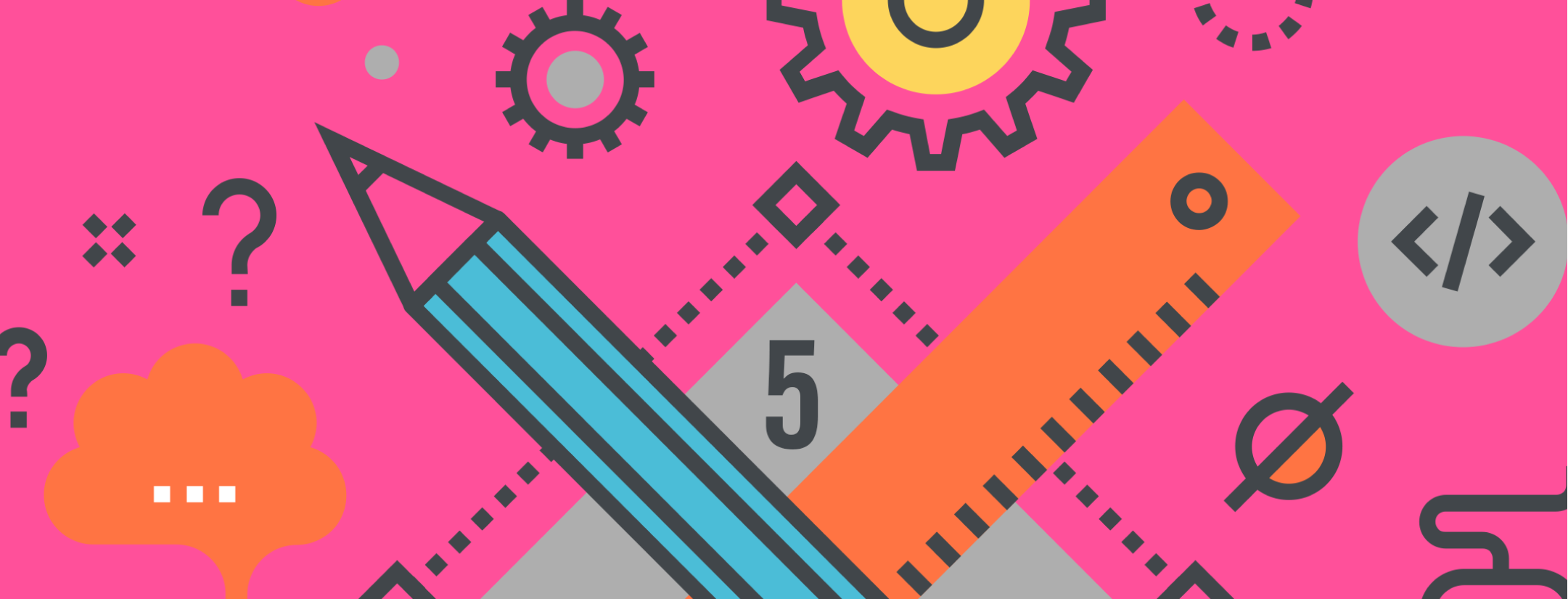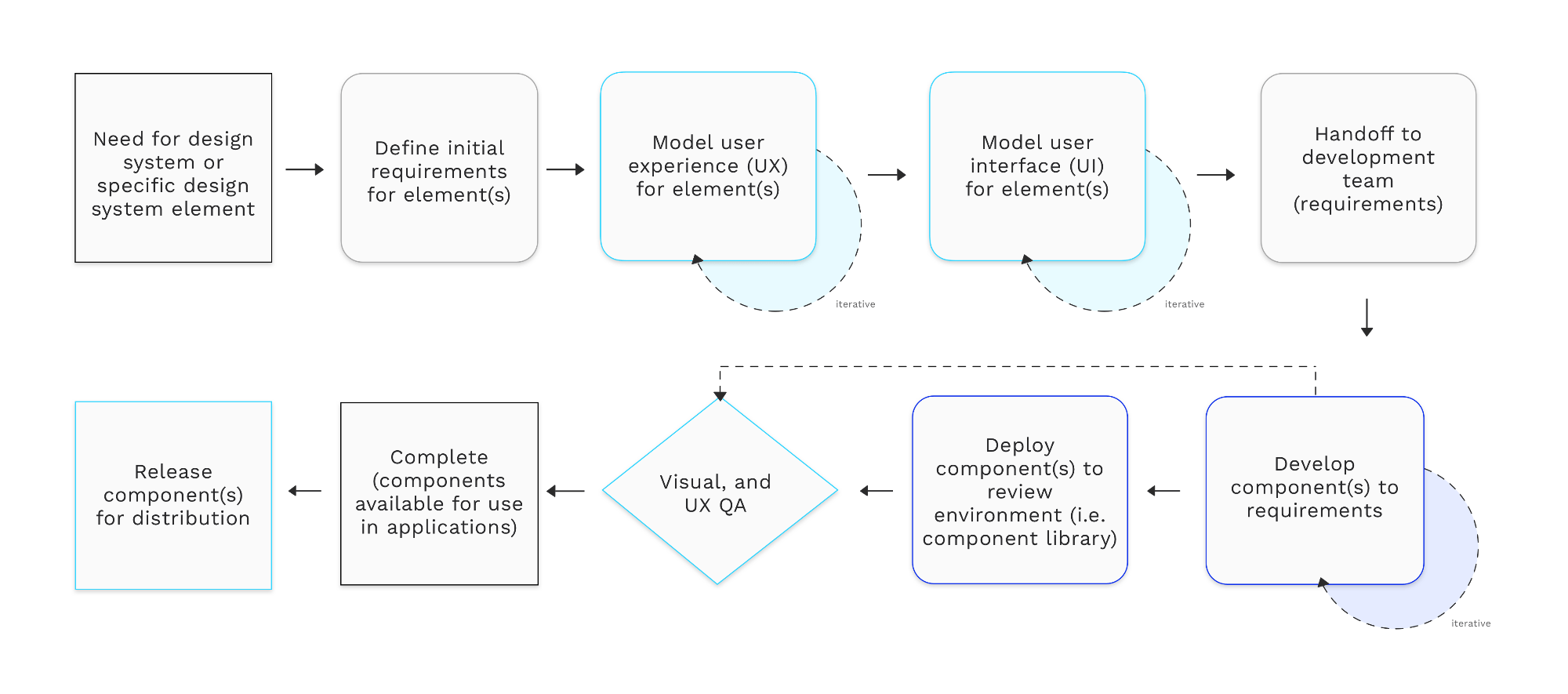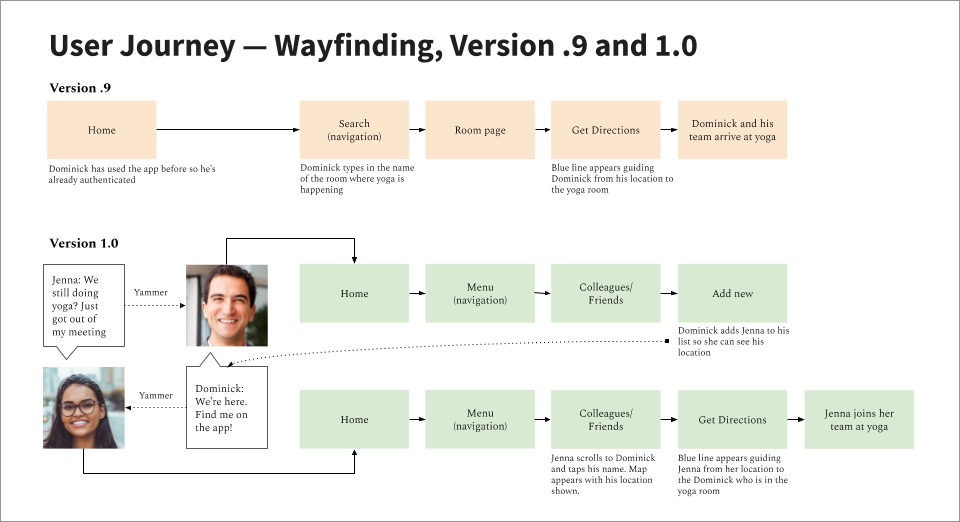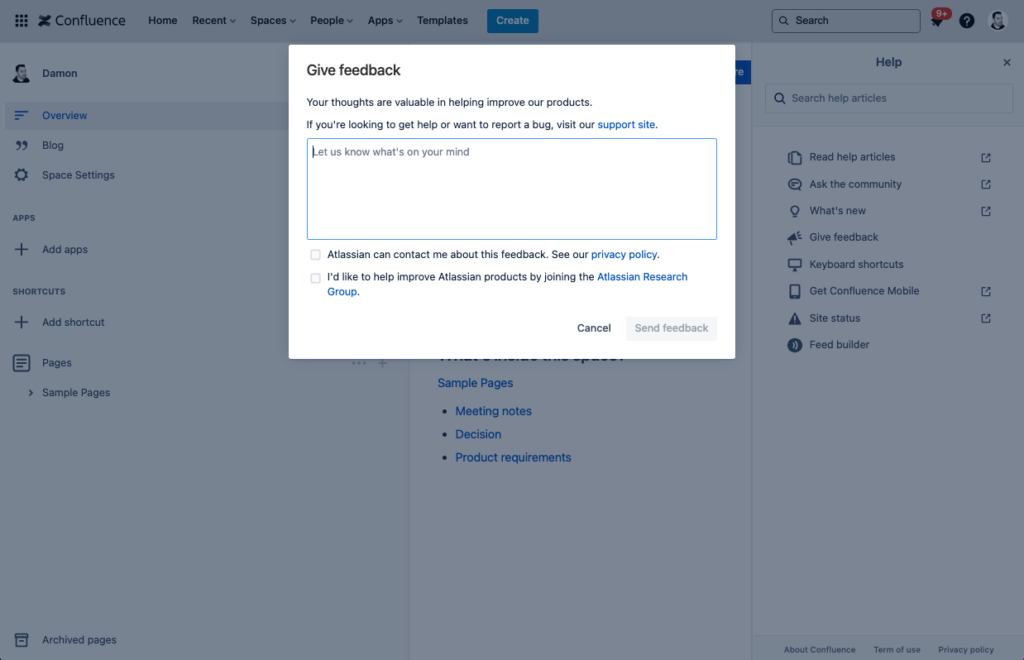
The Future of UX: Top 7 UX Design Trends to Keep an Eye Out For In 2023 and Beyond
- Product Design /
- Product Leadership /
Fads come and go, but trends can last for years or even decades as they reshape the way we live and work. I wanted to focus on the top User Experience (UX) design trends that are shaping the future of user experiences and products. The practice of user experience design continues to evolve as a tectonic element in business. Great design is helping to build deeper connections with users, enabling product teams to deliver more successful outcomes, and maximizing optimal ratios of resource allocation to value.
I have always been fascinated by the intersection of technology with human behavior. UX trends are both exciting and intriguing. For businesses that want to remain competitive and relevant in this rapidly evolving world, it is imperative to have a sound pulse on emerging trends. UX trends are transforming digital products that enable small teams and large-scale organizations to support employees, partners, and stakeholders.
At Emerge, we have a dynamic and rich history of working with product leaders and product teams, collaborating to create prolific User Experiences for their customers and differentiating their products in the market. In this article, I have distilled the latest and most impactful trends. Incorporating data-driven design, mass design system adoption, and automating UX processes are just some of the top trends that are shaping the future of UX, the tools we use, and the benefits we can see. By staying ahead of the curve and operationalizing these sage UX practices quickly, product teams can ensure that their products discover and maintain market fit.
I’m excited to share the top 7 UX trends to keep an eye out for in 2023 and beyond. Let’s dive in and explore what the future of UX has in store for us!
Trend 1: Data-Driven Design
One of the top trends we see in UX design is data-driven design. Data-driven design is a process in which user data is collected (i.e analytics, feedback loops, user testing, etc) to inform the design decisions, from the initial design phase to ongoing improvements and iterations. Here are some of the benefits of data-driven design in product development:
Improved User Experience: By collecting and analyzing user data, design decisions can be made based on user behavior and preferences, resulting in a more user-friendly and intuitive product.
Faster Iteration: Data can be used to quickly identify issues and areas for improvement. This allows designers and product teams to collaboratively prioritize, propelling more expeditious and effective changes to the product.
Better ROI: Data-driven design can lead to a more efficient and effective product, resulting in higher user satisfaction and retention. Subsequently, increased revenue and profitability become viable.
Increased Engagement: More engaging and valuable product development is actualized by analyzing user data to identify the features and functions that are most important to users.
Reduced Risk: Data-driven design provides insight into user behavior and preferences that can inform design decisions. Ultimately, this reduces the risk of creating a product that does not meet user needs.
Overall, data-driven design empowers product teams to create a product that is more closely aligned with user needs and motivations, realizing a more successful and profitable product.
In our work with product teams, we have seen these benefits firsthand. For example, we like going beyond using analytics that focuses on transactional data, where the numbers reveal only one side of the story. To truly understand the scope of a user’s experience, it’s helpful to gain insight into the user’s behaviors and the motivations behind them, and the actions they have and haven’t taken. One way we have seen this be extremely effective is through iterative user testing. In this scenario, we’re aligning each user test to a specific objective like gathering data to build stakeholder alignment, use cases for value creation, or usability as they interact with the product as they work toward specific outcomes.
This approach enables collaboration among everyone on the product team and isn’t isolated to the practice of design. Using data-driven design can facilitate alignment in developing a collective understanding of the users. Further, teams are able to acquire contextual insight into the value that evolves from the user experience and the intended outcome of the users’ actions
Trend 2: Mass Design System Adoption
Another emerging ux design trend is the widespread adoption of design systems. A digital product design system is a singular source of truth for the accountable experiential. It provides guidelines, standards, and reusable components that ensure consistency in architectural, visual, and interaction design across a range of products and platforms. When it comes to digital brand and business initiatives — consistency, accuracy, and efficiency are only possible with an aligned digital design system.
Notable companies such as Apple, Google, Airbnb, Uber, and IBM have modified their methods of constructing digital products by implementing their customized design systems. These companies have been able to accelerate the speed of development and elevate creativity within their organizations by leveraging an assortment of reusable components, including core design principles that direct the use of those components. Going forward the benefits of a design system can be fully realized by start-ups and fortune 100 companies alike. There are several reasons why mass design system adoption has become a trend in UX design:
Increased Efficiency: Design systems can help product teams work more efficiently by streamlining the design process and enabling rapid prototyping and iteration. By using pre-designed components and patterns across products, designers can focus on solving specific design challenges rather than starting from scratch for every new project. Reducing redundancy significantly lowers resource allocation.
Consistency: Design system adoption helps to ensure consistency in visual and interaction design across products and platforms. This can improve the user experience by making it easier for users to navigate and use products that share a common design language. The same components and patterns are used repeatedly, helping users to become familiar with the interface and find what they need quickly and easily.
Improved Quality: The implementation of a design system ensures that all interfaces are developed with the same level of quality and accuracy addressing the constant challenge of UX fragmentation. This means that designers are able to spend more time on other aspects of their products, such as ensuring the interface is intuitive, accessible, and engaging.
Scalability: Design systems can be scaled across different products, platforms, and teams, making it easier to maintain and update design standards and guidelines as products evolve. Design systems are updated regularly. When changes are made, it is easier to track them, ensuring that all products are using the latest version. This reduces the costs associated with keeping interfaces up to date.
Collaboration: Design systems promote collaboration and communication between designers, developers, and other stakeholders. By providing a shared language and set of guidelines, design systems can help teams work more cohesively and efficiently.
At Emerge we can confirm from our own work with clients that these benefits can now be fully leveraged and realized even for early-stage companies. Design systems provide a research-backed approach that can then be modified to align with the brand and key use cases of a product. One of the best examples can be seen in companies that have embraced breaking down the traditional silos between disciplines and want to promote cross-functional collaboration and ownership. It’s thrilling to see how design systems are deepening the relationship between researchers, designers, and engineering to produce great products and services. You can also see this exemplified by brands embracing Product-Led Growth. You can also see it being reinforced by the very companies building tools to support the design community like Adobe and Figma.

By promoting efficiency, consistency, scalability, and collaboration, design systems can help teams accelerate the creation of better, more user-friendly products. As such, we can expect to see continued growth and adoption of design systems in the UX design industry.
Trend 3: Ecosystem Design
Ecosystem design is a holistic approach to designing, creating, and managing products, services, and solutions that are both economically and environmentally sustainable. Ecosystem design focuses on finding the optimal balance between the needs of the environment and those of the people, businesses, and organizations that make up the ecosystem. It involves identifying opportunities for sustainable growth and development.
Design thinking is at the heart of ecosystem design. Design thinking is an approach to problem-solving that emphasizes user-centered design and rapid prototyping. It is an iterative process that involves gathering information, identifying problems, brainstorming solutions, and taking action. Design thinking can help to create solutions that are both economically and environmentally sustainable. This approach can bring several benefits, including:
Better Understanding of User Needs: By embracing an ecosystem approach, designers can gain a better understanding of their users’ needs, preferences, and behavior within the context of the interdependencies of stakeholders across a larger ecosystem. This can lead to products that better meet user needs and offer a more satisfying experience.
Improved Sustainability: Ecosystem design considers the environmental impact of a product, both during its use and throughout its life cycle. By designing with sustainability in mind, products can reduce material waste and energy consumption and have a lower overall environmental impact.
Enhanced Collaboration: Ecosystem design requires collaboration between all stakeholders, including suppliers, distributors, and customers. This can lead to more efficient processes and a better end product. Another way to look at this is the alignment of disparate stakeholders to align around a shared vision and desired outcome.
Greater Resilience: An ecosystem approach allows for greater resilience in product design and development. Designers can better adapt to changes in the market, user needs, and environmental factors, engaging a network of stakeholders that are vested into the outcomes. This adaptability is a critical element to driving business resilience as a whole with national and global policies constantly shifting.
Improved Competitiveness: By designing with an ecosystem approach, products can better meet customer needs, reduce environmental impact, and increase efficiency. This can lead to a more competitive product and a stronger market position.
Over the last 15 years, Emerge has partnered with companies to modernize the value chain, with a focus on empowering people, promoting environmental stewardship, and business resilience. Eco-system design has been an integral part of working cross-functionally and culturally and supports the proliferation of new technology that will support everyone.
Through the advancement of ecosystems, businesses have the ability to make unified ecosystem services that please their customers, fend off potential threats, and generate fresh sources of value.
Trend 4: Automation of UX Processes
Another future ux trend in UX design is the automation of UX processes. In the past, UX designers and product teams would create detailed user journey maps to outline the journey a user moves through while navigating through each stage of the customer lifecycle. While these maps are still very relevant, they are often time-consuming to create. In the future, designers will be able to automate these processes through software. This will allow product teams to create highly detailed user journey maps and associated flow diagrams across touchpoints using substantially less time and resources. Designers will be able to dedicate more time to connecting with users and creating innovative products that connect with the emotional and functional value drivers. While automation of UX processes is focused on product design, it can also be leveraged across functions such as marketing. Marketers can create detailed customer journey maps to outline the various paths to purchase. This allows cross-functional teams to create more personalized experiences and better understand their customer’s behaviors. There are several benefits to the automation of UX processes in product design, including:
Increased Efficiency: Automation can streamline and automate repetitive tasks such as user research, testing, and data analysis. This allows UX designers to focus on more creative and strategic tasks, ultimately leading to increased productivity and efficiency.
Consistency and Accuracy: Automated processes can ensure consistency in design across different platforms and devices, as well as accuracy in data analysis and reporting.
Cost Savings: Automating UX processes can reduce the time and resources required to complete projects, leading to significant cost savings over time.
Improved Quality: By automating tasks such as user testing and data analysis, product teams can obtain more accurate and reliable feedback from users, leading to a higher quality end product.
Faster Time to Market: Automation can accelerate the design and development process, enabling products to be brought to market more quickly.
Better Collaboration: Automation tools can facilitate the synchronization of information and collaboration between UX designers, developers, and other stakeholders, ensuring that everyone is working from the same data and information.
Most recently at Emerge, we have seen this trend start to impact not only our work but how our clients are changing their internal practices and design operations. One of the keys to driving successful automation is 1) focusing on people as much as technology, 2) developing an operating model that enables scaling, 3) the quality of your inputs can’t be overlooked and may require selective investment into where you can maximize your impact in a measurable way.
Overall, automation of UX processes can lead to more efficient, consistent, and accurate product design efforts, empowering designers and product teams to focus where they are needed most. Ultimately, costs decrease, product quality is improved, and time to market accelerates.
Trend 5: Intuitive User Interfaces
The incorporation of intuitive user interfaces is rapidly evolving, proving to be a long-term trend in UX design that is expanding. With multi-form factor ubiquity and voice-controlled devices and interfaces becoming more popular, designers are faced with the challenge of creating intuitive and easy-to-use interfaces for these new devices and increasingly complex use cases. For example, currently, most voice-controlled devices feature interfaces that have been labeled as difficult to use. As voice-controlled devices become more popular, designers will need to create new interfaces that are easy to use, intuitive, and conversational. This means that products will need smaller buttons, simple instructions, and language that is easy to understand. Designers can begin to incorporate an intuitive user interface by conducting user testing on prototypes. They can then use the feedback they receive to improve their designs and create interfaces that are easily understood by their users. Some of the benefits that you can see include:
Improved User Satisfaction: Intuitive UIs can help users easily navigate a product, reducing frustration and improving overall satisfaction with the product.
Reduced Training Time and Costs: If a product has an intuitive UI, users can quickly and easily learn how to use it, reducing the need for extensive training and associated costs.
Increased Productivity: Intuitive UIs can help users complete tasks more quickly and efficiently, increasing their productivity and potentially saving them time.
Reduced Errors: Clear and intuitive UIs can help reduce user errors, leading to fewer mistakes and less time spent correcting them.
Increased Adoption and User Engagement: Because users are more likely enjoy using a product that is easy to use and understand, products with intuitive UI will garner a higher adoption rate and more frequent use.
Competitive Advantage: In today’s digital world, products with intuitive UIs can give companies a competitive advantage in the market, as users are more likely to choose products that are easy to use and understand.
The benefits of an intuitive product experience and user interface have been at the heart of our work with product teams for more than 20 years now. While the intent has never changed the principles, practices, and considerations have shifted dramatically. An intuitive experience is contingent on being clear on who your audience is, how value is created for them, and the context of the situations in which they use the product. We worked with a client who had a common request “help us make this beautiful and simple”. What was required to do that was a progressive experience that leveraged game mechanics to build user proficiency, where capabilities were unlocked in bite-sized chunks to enable user success. The result was an 80% reduction in time to task completion which also resulted in fewer customer support inquiries. The client was able to realize all of the above-mentioned benefits.

Overall, intuitive UIs can lead to more successful and satisfying products, while also helping companies save time and money on training, support, and development costs.
Trend 6: Increased Focus on User Feedback Loops
Customer feedback is critical to the long-term success of both your product and business. But without proper acknowledgment, response, and action, your customers may question whether or not you’re listening. A customer feedback loop is actualized once your business has begun to acknowledge and process this feedback. The loop is completed when you respond to your customers; apprising them of the remedies that are being created for pain points and what steps are being taken to make the experience more engaging. Doing so will assure your customers that you value creating moments of delight in their user experience. What may have once been considered CX best practices, have now scaled significantly, becoming a core requirement for your business and product success.
Here are some benefits of user feedback loops in product development:
Meeting Customer Needs: User feedback can help product teams understand the needs and preferences of their customers. By understanding these needs, companies can tailor their products to better meet their customers’ requirements.
Increased Customer Loyalty: By actively soliciting and responding to feedback, businesses can demonstrate that they value their customers and are committed to meeting their needs. This can help build long-term loyalty and advocacy among customers.
Identifying New Opportunities: User feedback can help companies identify new opportunities for product development. Customers may suggest new features or products that they would like to see, which can help companies expand their product offerings. This can lead to better product quality, increased customer satisfaction, and more sales.
Reduced Churn: By addressing customer complaints and concerns in a timely and effective manner, businesses can reduce customer churn and retain more customers over the long term.
Reducing Development Costs: User feedback can help product teams identify issues early on in the development process. This can reduce development costs by avoiding costly mistakes and ensuring that the final product meets customer expectations.
What may have once been considered CX best practices, have now scaled significantly, becoming a core requirement for customer-centric businesses looking to build great products, self-service models into existing products, or adopt a product-led approach. At Emerge, we have been on the front lines helping product teams deepen their understanding of users, and identify gaps and new opportunities. We understand that depending on the size and composition of your team, this may be a substantial undertaking. A great place to start is empathy mapping to codify what you know and then validate and expand on what you know about the people you serve.

Overall, user feedback is an important tool for product development. It helps companies understand their customers and create products that meet their needs, leading to increased customer satisfaction and sales.
Trend 7: Artificial Intelligence in UX Design
Another future UX design trend is the incorporation of artificial intelligence (AI) in product design. AI is not a new technology, but it has only recently begun to transform industries and the field of UX design. However, as it continues to evolve, it will become a foundational element in the design process. AI will provide sophisticated mental models that will allow us to model and support human behavior. Once incorporated, AI has many advantageous benefits that designers will be able to leverage. With AI completing complex tasks that would otherwise require human input and programming for a specific set of rules to be followed, designers will be empowered to create more personalized products. Artificial Intelligence (AI) has many potential benefits that are anticipated in UX design.
Personalization: AI can analyze user data, behavior, and preferences to create a personalized experience for each user. By tailoring the UX design to each user, the product becomes more relevant and engaging, leading to higher user satisfaction.
Automation: AI can automate certain design tasks, such as prototyping, layout, and testing, which can save time and resources for designers. This frees them up to focus on more creative and strategic aspects of the UX design process.
Predictive Analytics: AI can help predict user behavior, which can inform the UX design process. By analyzing data from user interactions, AI can identify patterns and make predictions about future behavior, helping designers create better user experiences.
Improved Accessibility: AI can help create more accessible designs by analyzing user data and behavior to identify common pain points for people with disabilities. By addressing these pain points, designers can create more inclusive and accessible designs.
User Research: AI can help gather and analyze user data at scale, making it easier for designers to conduct research and identify patterns. This can provide better insights and a more informed UX design process.
In the last several years we have worked with and been experimenting with building interfaces to interact with AI-based products. The emergence of AI and its benefits is rapidly growing and here are a few of our favorite types being leveraged in the product space.
- Machine learning is a major field of AI that equips machines to make sense of, interpret, and process data from many different perspectives in order to generate correct results.
- Deep learning is a type of convolutional neural network made up of distinct layers for sorting out and classifying data elements.
- Natural language processing is an AI technology that has advanced so that computers are capable of basic communication with humans, often to create conversation-based chatbots.
- Expert systems rely on logical notations and conditional operators to learn and mimic the choices made by people.
- Random forest algorithm is sometimes referred to as “ensemble” or “decision tree” since it combines multiple decision trees to evaluate output accuracy.
Overall, AI can help UX designers create more personalized, engaging, accessible, and data-driven designs.
Connecting Your Product Experience To Users
The future of UX design is bright. Designers and product teams will continue to create products that are more personalized and provide their users with a more satisfying experience. These trends in UX design will help designers make their products more relevant to their audience and create better user experiences. Those that lead will pave the way for the best practices of tomorrow and fully leverage the benefits of the new technologies making these trends more accessible than ever before. If you are part of a product team, it is important to keep an eye on these trends. Keeping a pulse on these trends will empower you to create more innovative products and provide your customers with the best experience possible.
At Emerge we couldn’t be more excited for the future of design as these trends continue to shape new and existing products. If you’re exploring how design can leverage to deliver on users’ needs and help to achieve extraordinary business results, we are thrilled to talk. This is an incredible time to integrate the practice of UX design from product discovery through delivery, aligning people, solving problems in new and unique ways, and scaling up.
Colleen Murphy, Copy Editor